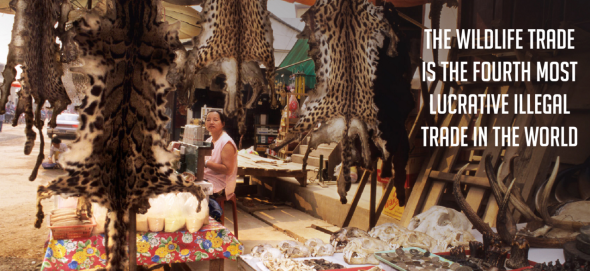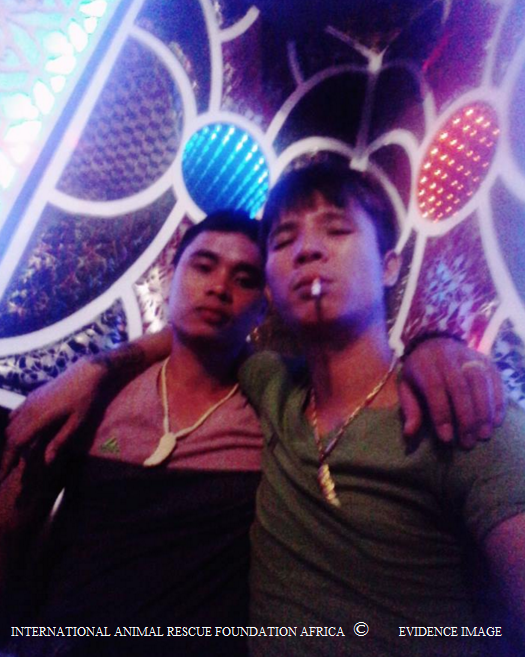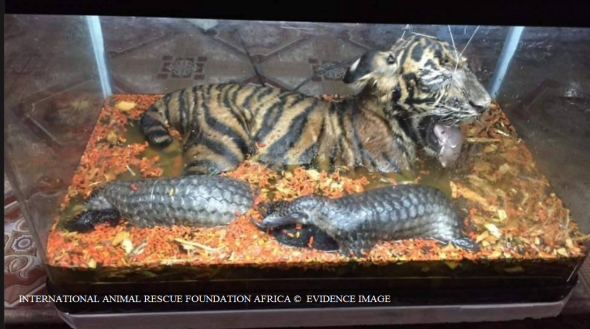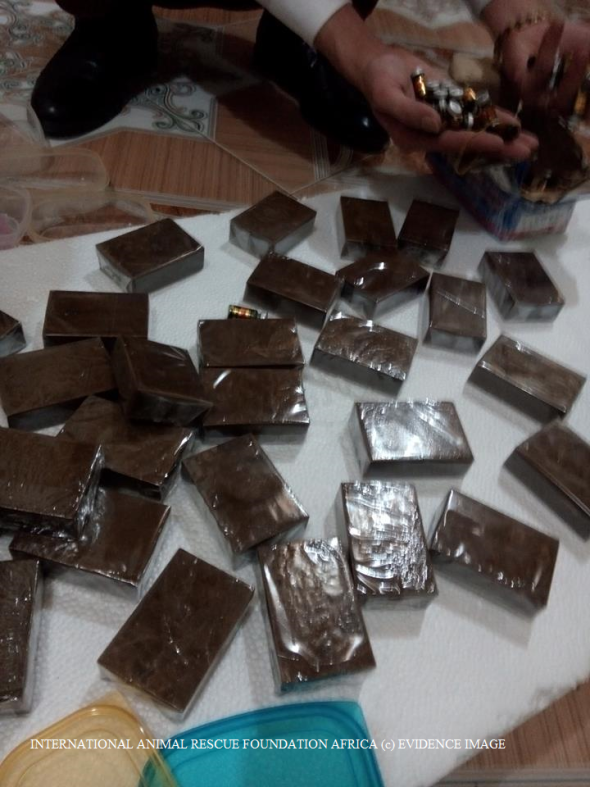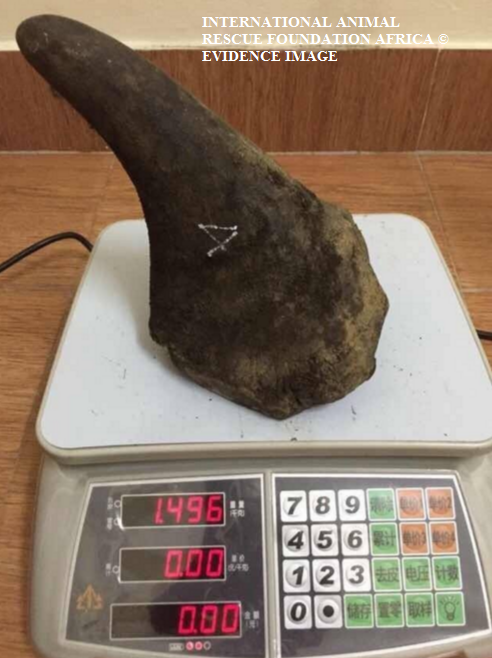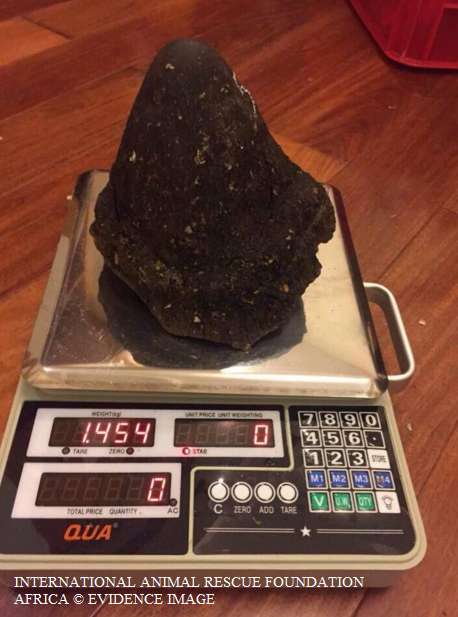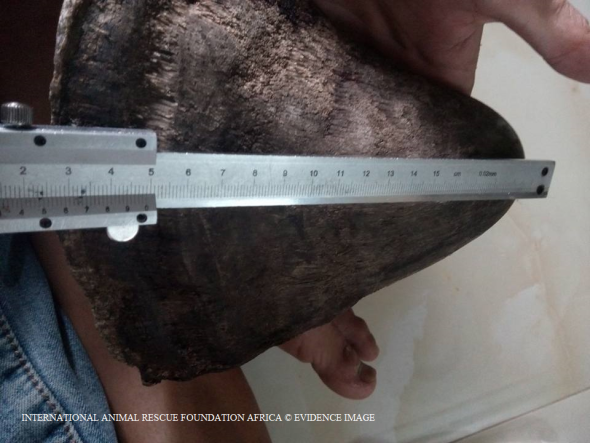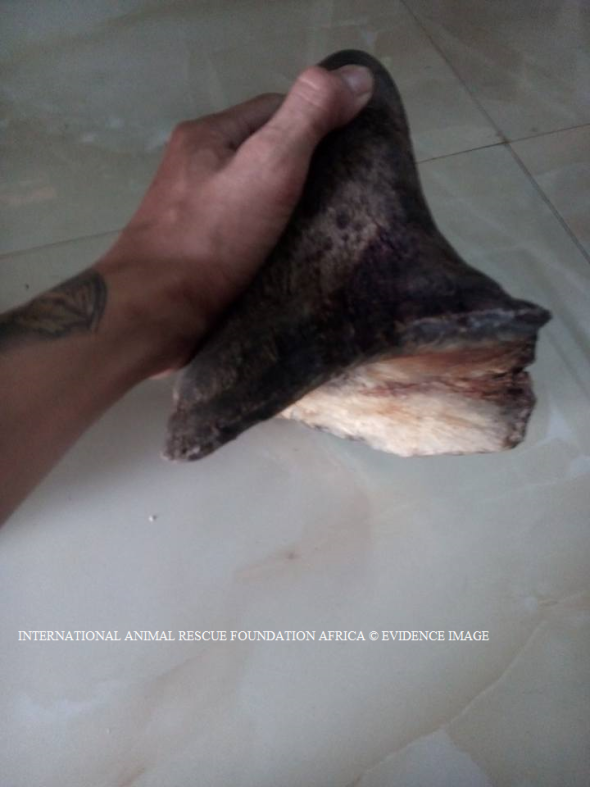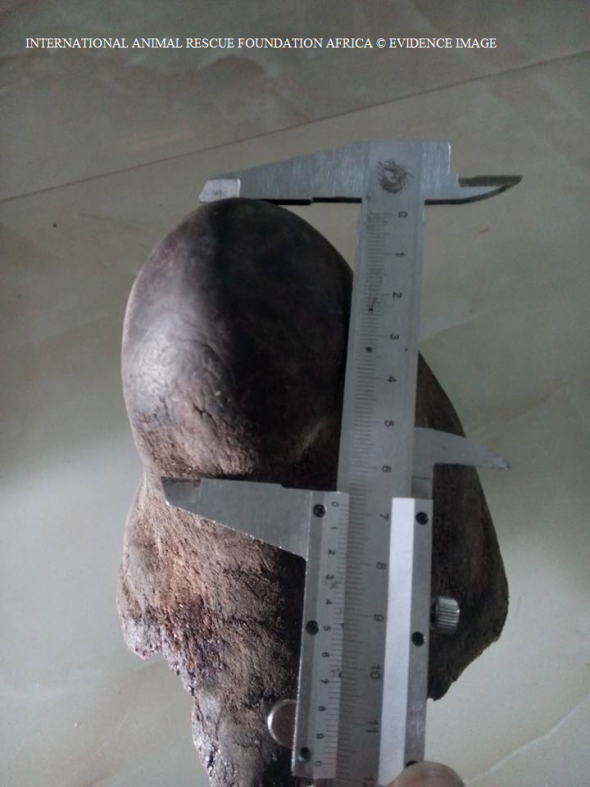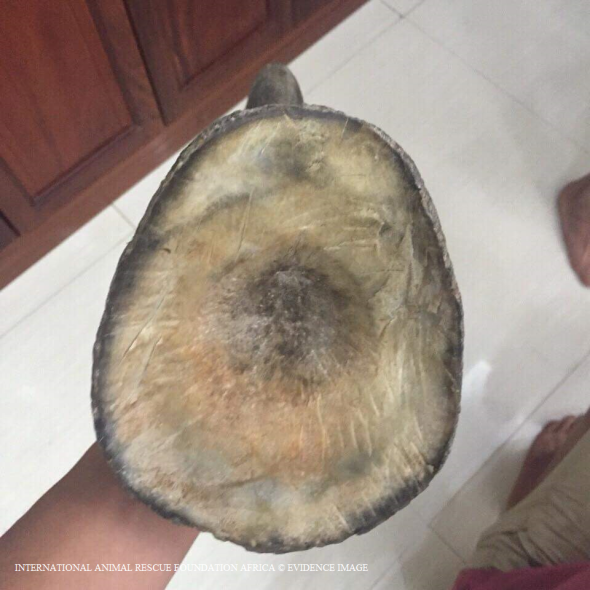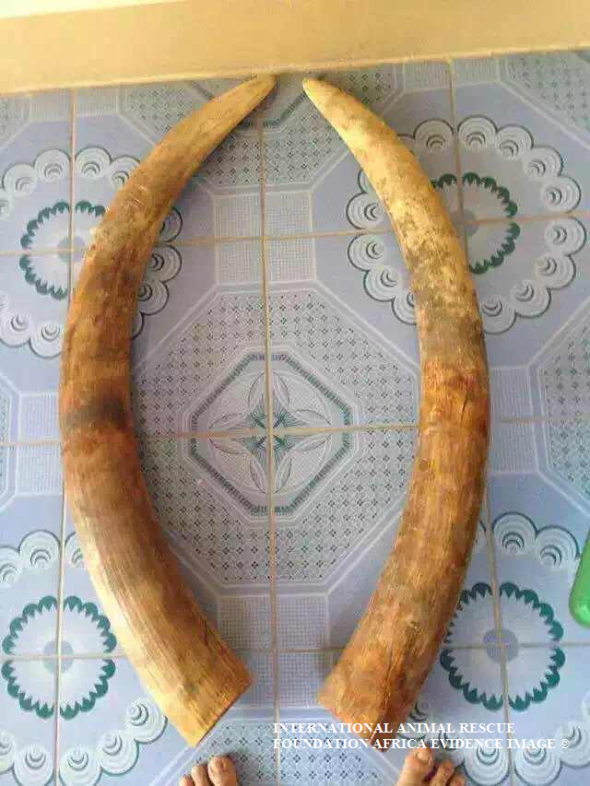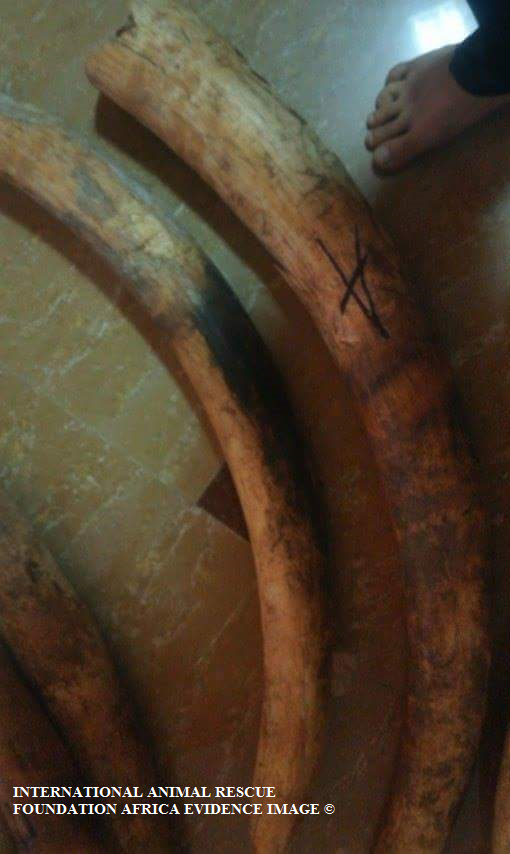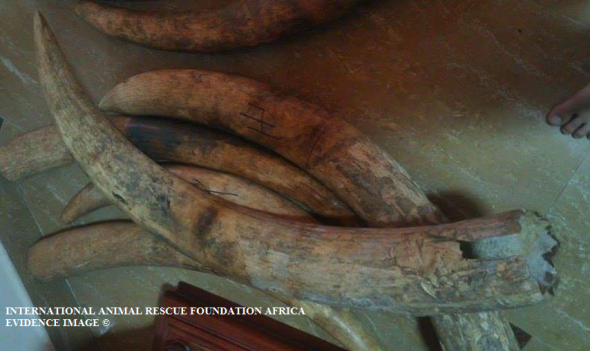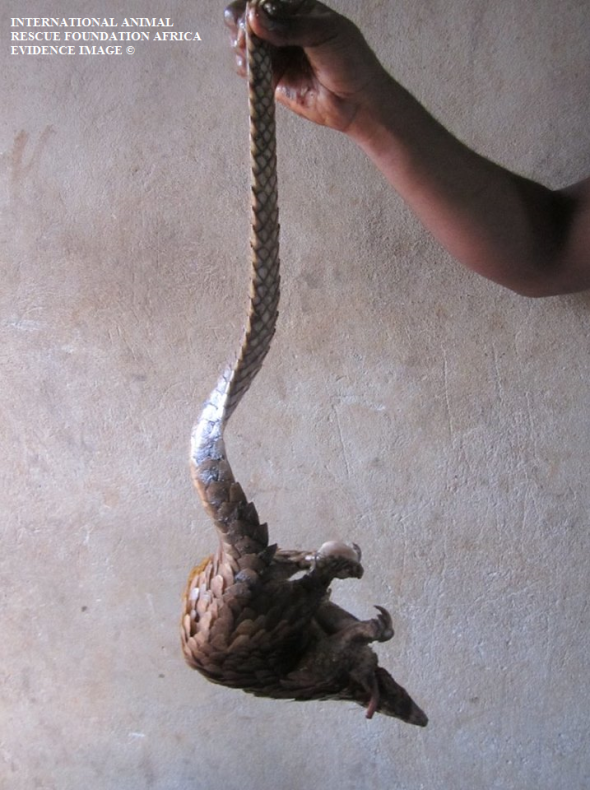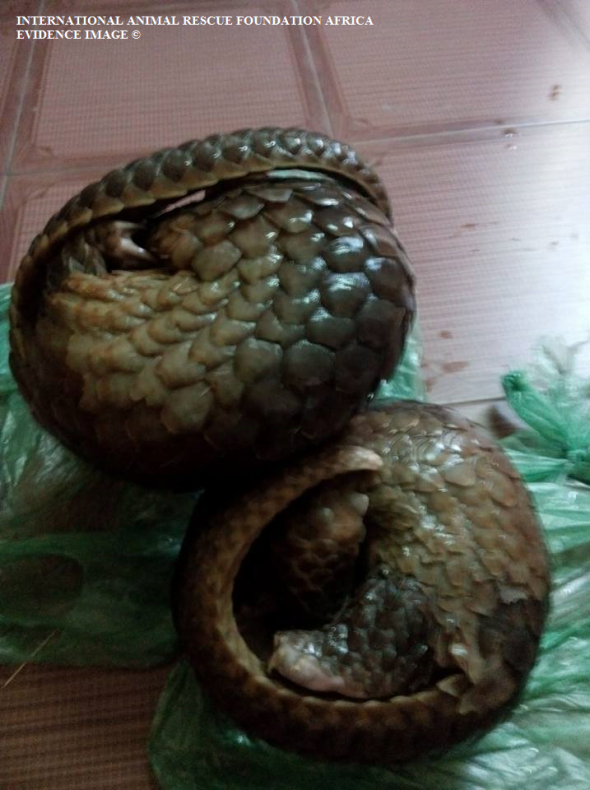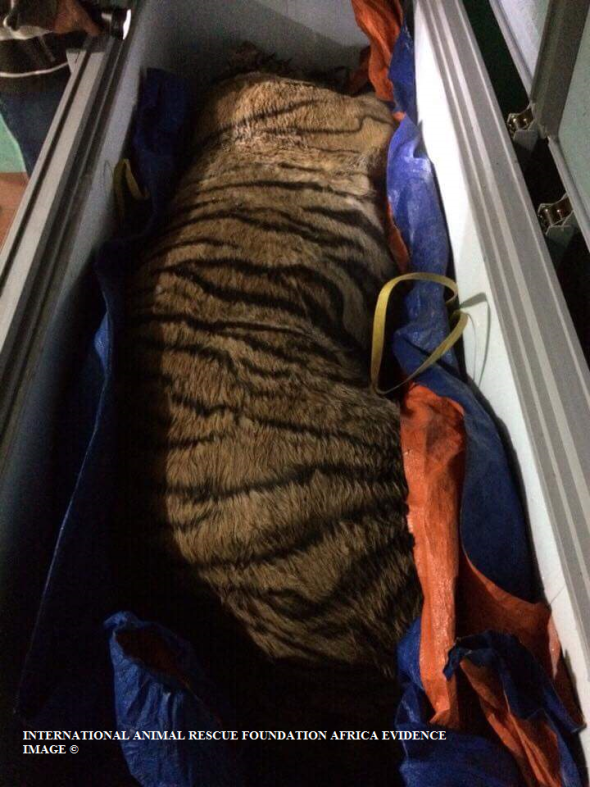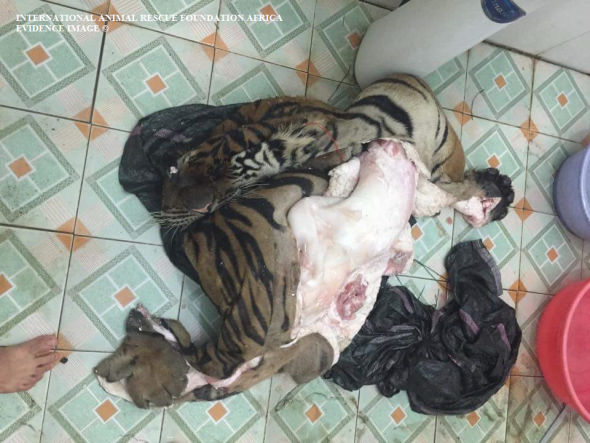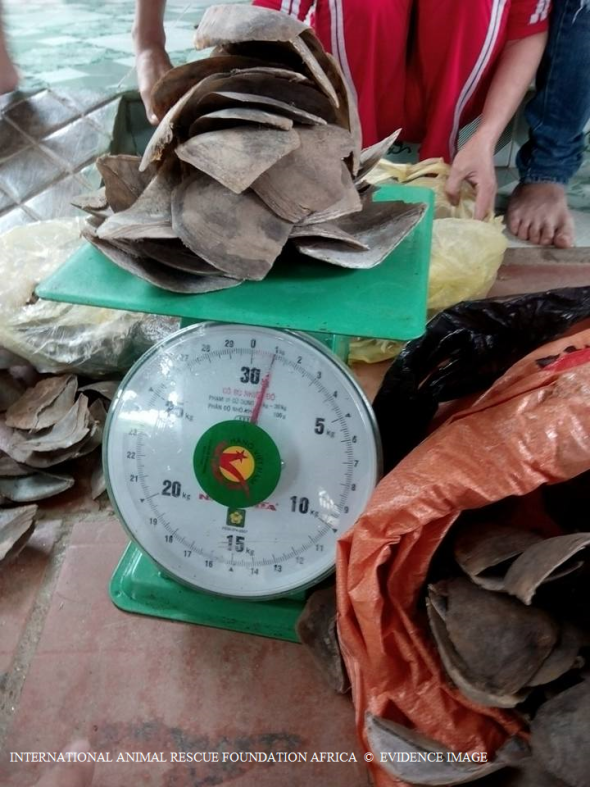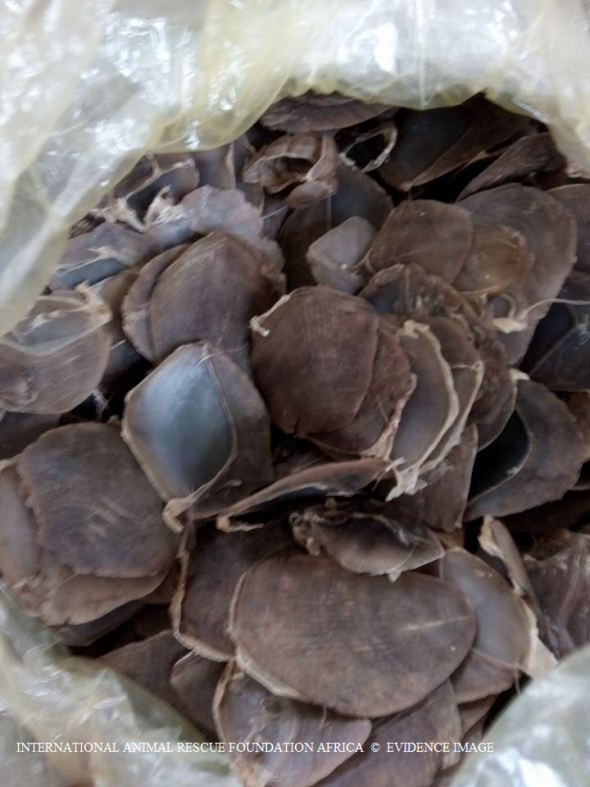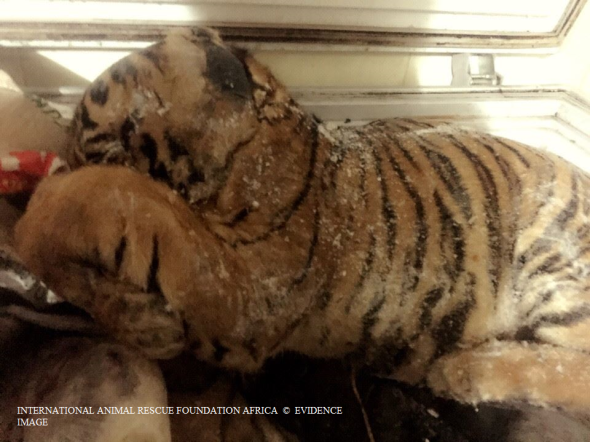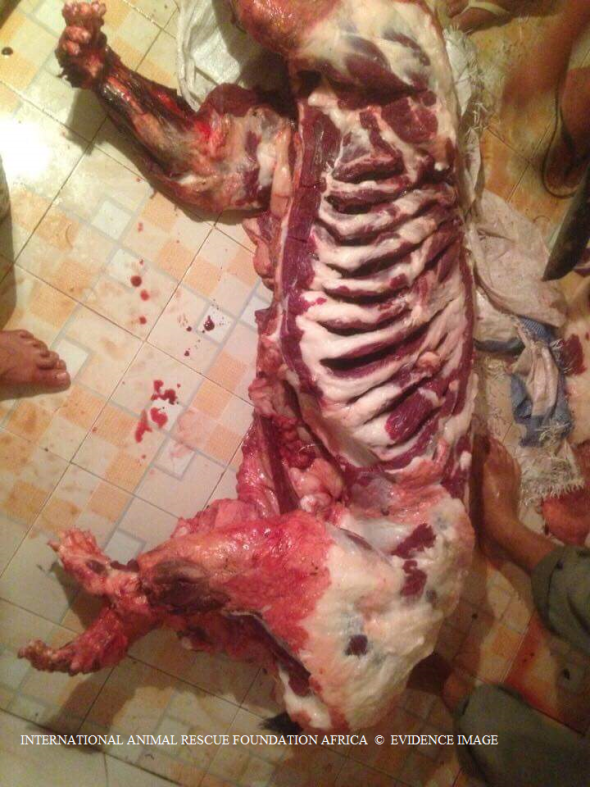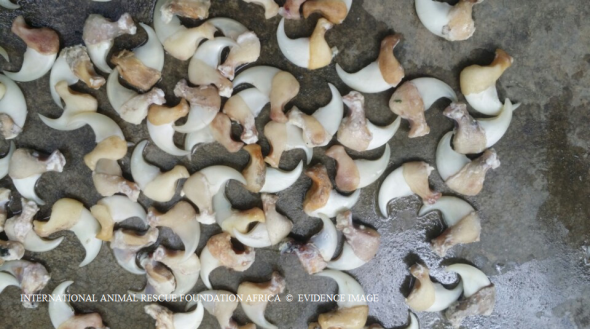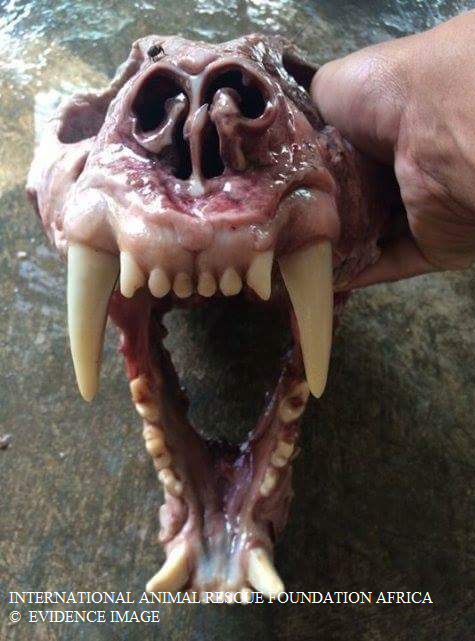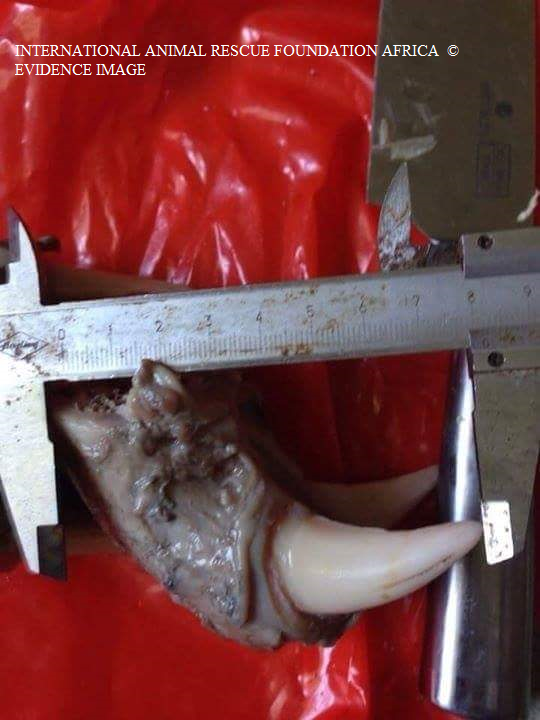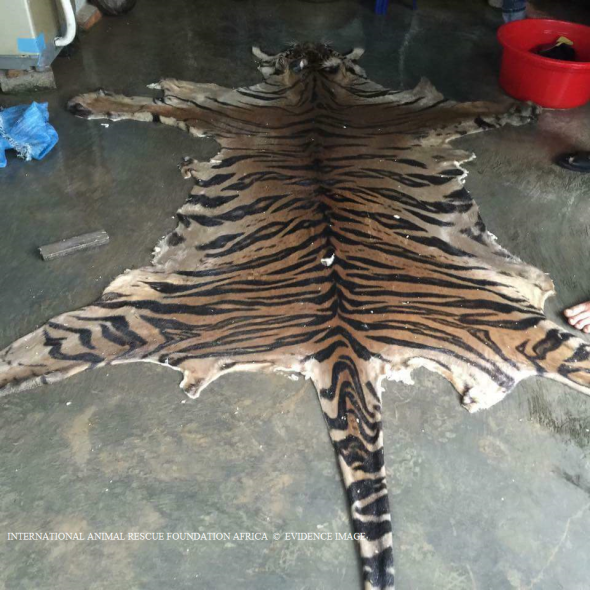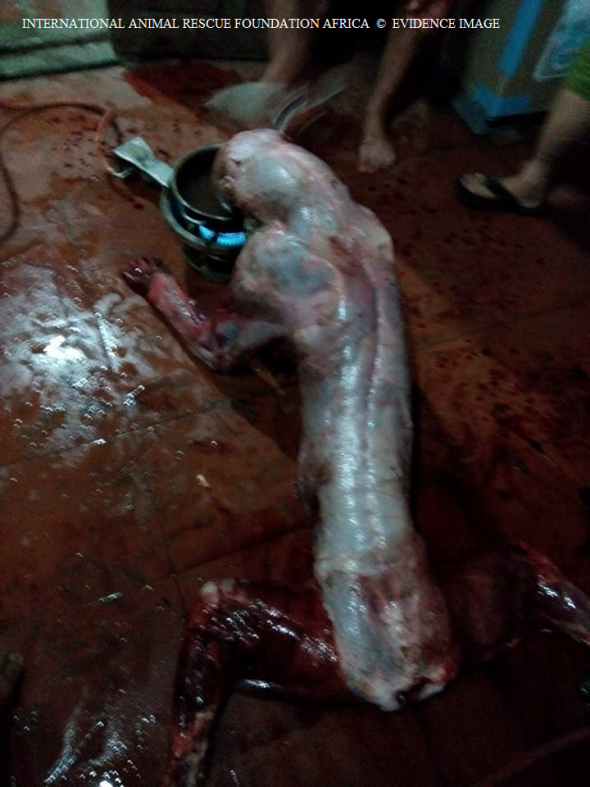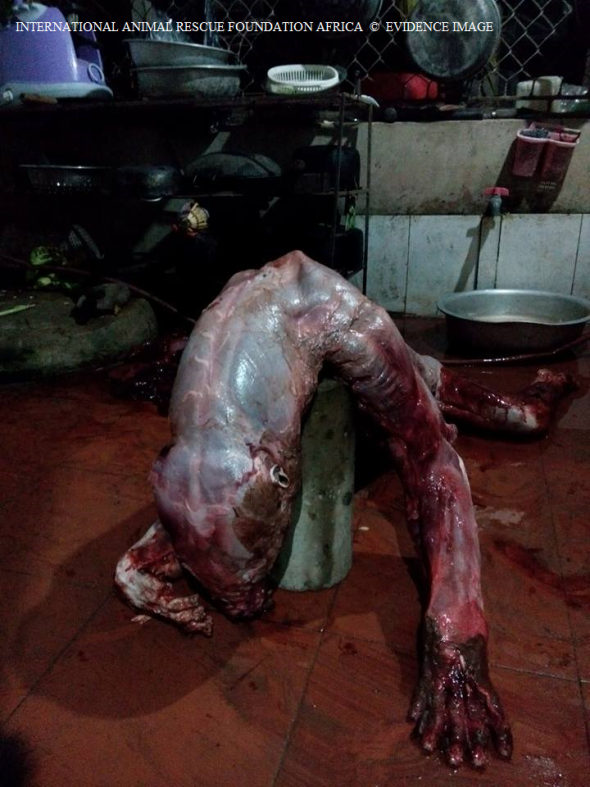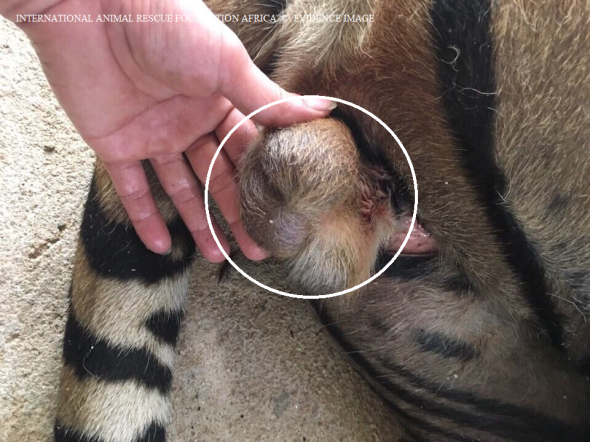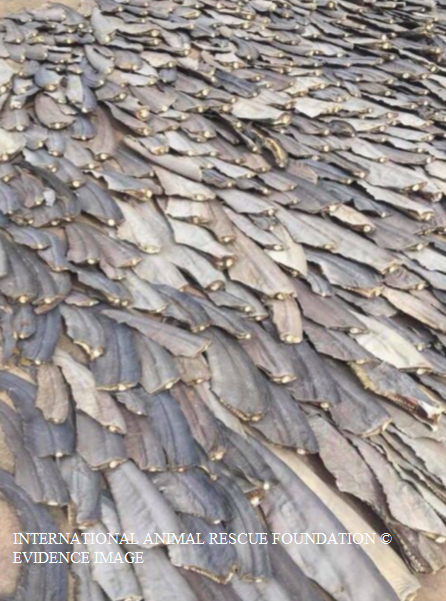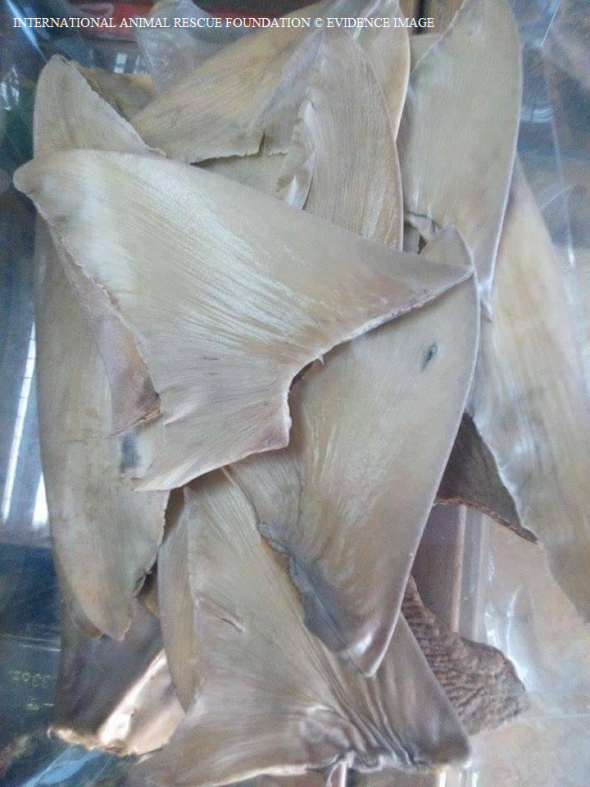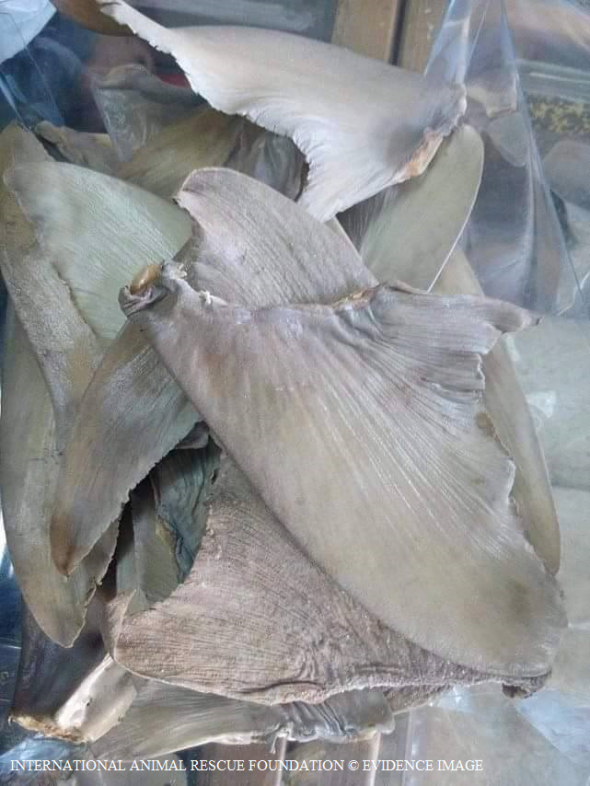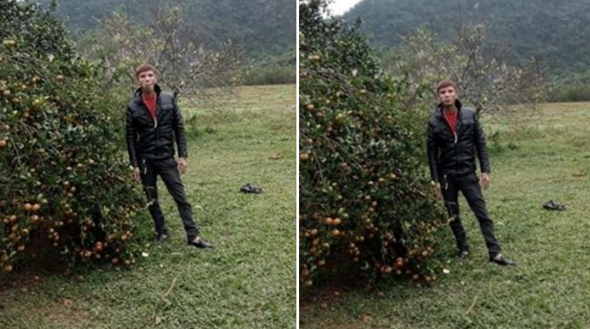Illegal Wildlife Trade | Investigative Report | Viet Nam & Thailand.
ILLEGAL WILDLIFE TRADE IS BOOMING
WARNING - THE FOLLOWING INVESTIGATIVE REPORT IS GRAPHIC
Investigative report written by: Dr Jose C. Depre.
International Animal Rescue Foundation Africa and her External Affairs Environmental Investigations Department commonly known as the (EAD), have for the past year been warning police agencies, and Interpol internationally and locally to tighten the grasp on the black market illegal wildlife traders, after a sudden spike was witnessed by us in trade emerging from Thailand and Vietnam (2013-2014)? IARFA’s External Affairs operations unit were somewhat suspicious as to why so many rhino and elephants were being poached, yet very little in the way of fresh animal parts I.e rhino horn and elephant tusk were being seen on the ground.
Back in 2014 the BBC reported that rhino horn and ivory in Viet Nam and China had heavily decreased (or was becoming more difficult to obtain), we disagree with the BBC’s 2014 documentary and have shown the evidence below to prove that trade is more than active in Viet Nam, with Thailand now the new rhino horn hub. We’re unsure as to what has caused this sudden increase of illegal trade and poaching in Africa and Asia, and the skyrocketing demand online, primarily on the United States social media platform identified as Facebook. What investigators located in the past year has shocked us, and has led to a multinational investigation spanning over 19 countries, resulting in IARFA’s biggest wildlife crimes investigation to date.
(NB: The following evidence depicted herein is of a graphic nature and viewer discretion is strictly advised).
A further concern was the sheer fact that rhino horn was becoming more difficult to locate on the streets of Viet Nam, which was also highlighted in the video below via the BBC (2014), yet rhinos are being slaughtered at some 5-7 a day on the African continent, primarily in South Africa. So we sent in our team of investigative officers to track down where we believed rhino horn and wildlife syndicates and traders were now in operation. The shocking evidence below proves what we believed all along. Thailand has become a hot bed for illegal rhino horn trade, and Facebook has yet again exploded with online illegal wildlife ‘profile shops’ and pet trade that criminals hide behind to peddle their trade on a grande scale.
Back in 2012 the External Affairs Department recruited a further twelve investigative volunteers due to worrying trade increases of mainly ivory, rhino horn and endangered tropical pets that were being sold at ground level, and on Facebook. Furthermore the (EAD) increased its online presence in relation to cyber crime projects run by Operation Trojan Horse founded in 2008 after it became apparent teenagers as young as 16 were illegally peddling animal parts and endangered tropical pets via their Facebook social media profiles.
While the (EAD) and her counterparts from the Operation Trojan Horse Online Surveillance Unit have been successful in locating and closing down illegal wildlife and pet traders (with arrests and seizures being made). Very little in the way of a decrease of demand and trade is being noted. Countless complaints to the United States Facebook platform with petition, hasn’t been successful either. Despite the fact illegal wildlife trade ranks as the worlds 4th largest illegal trade funding terrorism, narcotics, prostitution and child trafficking.
Over the past 365 days the External Affairs Department have been monitoring unusual peaks of the trade in rhino horn, ivory and tiger parts within Viet Nam, Thailand and Japan, with much online chatter from traders in Benin, Cameroon, South Africa and Namibia to Asian citizens peddling animal parts. Two individuals (pictured below) we’ve been wanting to catch up with now for over six months, after the duo skipped a meeting with two of our EAD officers in Thailand regarding the sale of rhino horn.
Its unsure if the two knew we were onto them, or they simply missed the meeting for unknown reasons. Either way and with a stroke of luck after data obtained from a bush meat trader in Cameroon we managed to catch up with our fiends again. This time the evidence we hold on them is so large it spans from Asia directly into Africa. From the 23rd December 2015 investigative officers from the EAD’s (Cyber Crime Unit) then moved into quickly obtain evidence to pass onto Interpol. From the 29th December 2015 (17:00hrs) we can now confirm the following evidence herein has prompted Interpol to now launch an ‘urgent investigation’ into serious wildlife crime spanning from Asia to Africa.
Had the meeting gone ahead back in June 2015 it would have led us ‘directly’ onto a more larger wildlife trading syndicate that we’ve been monitoring within Beijing, China since 2014, identified as Mr Ji Lu or Ken as he calls himself. Unfortunately the trail went dead, both the two young men and Mr Ji Lu vanished off the External Affairs radar. Then the EAD struck gold last week before Christmas after a random trace of a Cameroon bush meat poacher in Africa. We’ve long known that African bush meat poachers and traders communicate to Asian wildlife traders and syndicates either online in private chat forums, or via stolen cell phones. This time we had our men, more than enough evidence to launch a multinational investigation and further information that has led us onto newer more sophisticated traders.
“Thailand is the new hotbed for rhino horn trade”
However never did the EAD or ourselves believe we’d again come face to face with some of the most evil and sadistic animal parts traders we’ve ever encountered. If the images and evidence below is not enough to shock the Thai and Vietnamese Police into now acting, then we don’t know what is. The following evidence in image format below is shocking and may upset some of our readers.
However its no shock to us of which we have for the first time decided to show to over 7.8 million supporters exactly what we and other wildlife agencies are up against. Teenagers and young men and women from the ages of 16-20+ are trading anything from bear bile, real rhino horn, ivory, down to gorilla’s (all of which is strictly 100% illegal).
The two men above aged between 19-25 years of age we’re keen to catch up with again for their involvement in the brutal breeding and killing of innocent tigers for the bone wine trade. Furthermore the two individuals are also wanted for questioning for their involvement in the dealing and illegal possession of rhino horn and Elephant ivory. On conducting a random online trace the two men and possibly a female are believed to be using a pseudo Facebook profile that goes under the name of ‘White Tiger’ that has been set up as a female account. We believe we know whom the woman is, however as yet we haven’t 100% firm evidence to prove this is our woman from Japan.
(NB: Please note we cannot publish the identities of the two men and woman for legal reasons)
Its suspected that the woman’s name whom we believe is related to the two men above is Mme Phuong ***** whom possibly originates from Hanoi, Viet Nam, however we also believe that she goes under the name of Mme Chung. A further alias the female account uses on Facebook (not related to Mrs Chung) is identified as Cọp ******. The city that the two males and female accomplice frequents is identified as Phatthalung, Thailand. The home town of the Facebook account from which the female is ‘alleged to be residing within’ has been identified as Bang Kongra, Phatthalung, Thailand.
Furthermore a trace of the ‘accounts working address’ showed up as Bangkok ( กรุงเทพมหานคร ), which is a tourist company ferrying foreign and local tourists around Thailand. We have reason to believe that the female account possibly belongs to a Japanese woman that we have been following all over Australasia, who now runs an immigration agency on Facebook. However it must be noted that Mme Chung and Cop ***** are two different women. Confusing we know, we know though that both women and the men involved in this report are using 2-3 Facebook accounts and communicating in various chatter forums online!
The two men and one woman have for the past year been heavily dealing in rhino horn, ivory, and tigers that are brutally killed to produce an alleged medicinal wine (as seen above), rhino horn down to bear bile, narcotics (possibly heroin/hash (see image below)), and what appears to be counterfeit illegal cigarettes. The 1970/1990 and 2009 domestic and international rhino horn trade ban prohibits anyone from trading in rhino horn.
Meanwhile the 1989 ivory trade ban prohibits anyone from trading un-permitted ivory and ivory parts. Furthermore its a criminal offence (internationally and locally) to trade in anyone of the endangered species being that of pangolins and tigers. International Animal Rescue Foundation Asia successfully identified the many pangolin’s viewed for trade as the Manis culionensis or the (Philippine Pangolin). Hence why we had to move quickly to communicate all evidence to Interpol.
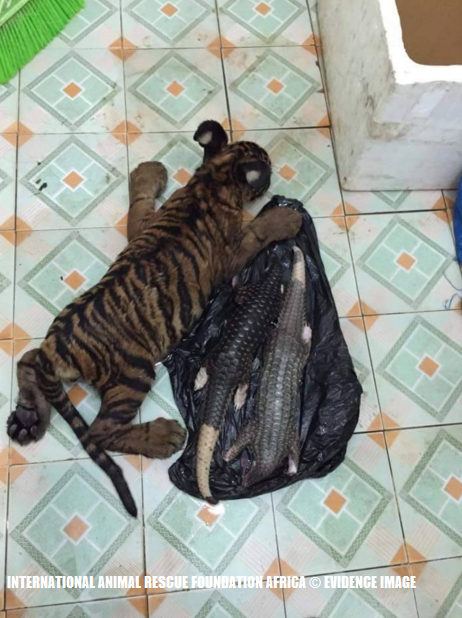
Illegal wildlife traders: Viet Nam & Thailand. Tiger cub was beaten over the head with Asian pangolins for the production of tiger and pangolin wine.
Back in June the External Affairs unit contacted the two men who’s names we’ve withheld in the hope to set up a deal to purchase rhino horn. Only one horn was available to purchase priced at $35,000 Vietnamese Dollars per/kilo. The horn had already been inspected by our Singapore counterpart that works closely within the trade circle.
The EAD officers then went ahead for the meeting of which as explained the two individuals didn’t turn up. Fortunately as explained we’ve managed to locate the two individuals again, this time though as you can see above and below, the two (possibly three individuals) have been rather busy since June 2015 (and way before they even cropped up on our radar). Some of the rhino horns can be viewed below along with ivory that is most certainly not permitted to be in the hands of these young men and women.
On locating further evidence that we required to instigate a multinational investigation we then again at 09:25am on the 23rd December 2015 and 29th December with a further communication on the 30th December 2015 communicated all (cyber evidence) and data to the Environmental Investigations Unit of Interpol via secure encryption. (Please note that are unable to provide all evidence onto this platform as it could/will impede on the investigation that is currently now ‘active’.
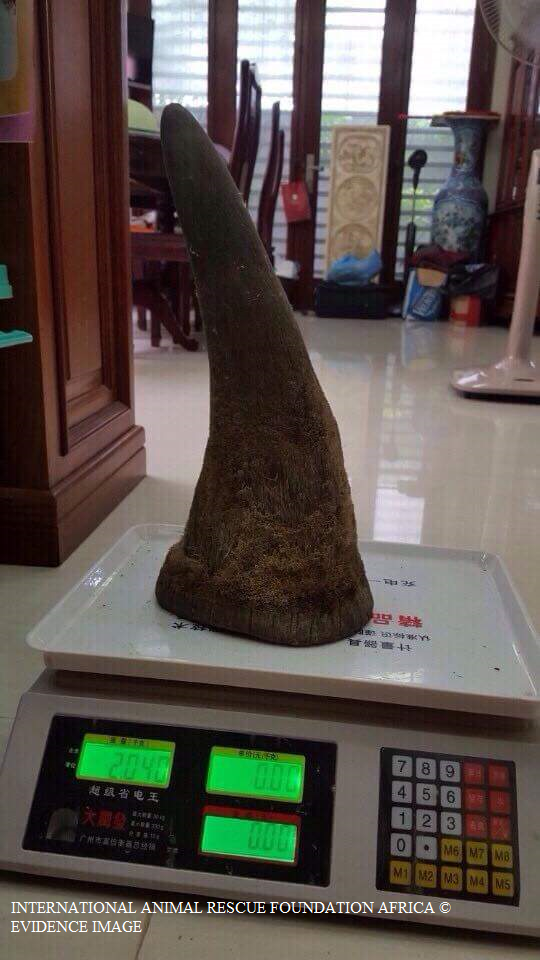
Trader weighs up a mature African rhino horn in back room. Total number of horns are worth in excess of 6 million euros.
Ivory trade was officially banned internationally back in 1989, however it hasn’t stopped these two rather sadistic and ruthless criminals from going about their trade bringing in millions of Vietnamese and Thailand dollars, most of which is traded on the US Facebook social media platform.
Furthermore it explains now where the vast majority of ivory and rhino horn is being traded. Viet Nam was virtually declared a no-rhino horn country by the BBC and the WWF back in 2014 as explained above. Unfortunately had the two investigations units bothered to look a little closer they’d have not only noticed our own concerns (with evidence being shown), but also many private online forums (including Facebook) booming in animal parts trade.
Below are numerous pieces of ivory all of which are not permitted. Investigate officers casually asked within the online chat forum if the ivory below was permitted, the [unnamed trader/peddler] was very forthcoming with his reply stating; “No, none of the ivory here is permitted”, meaning its 100% illegal to own/trade.
On immediately being made aware that the ivory was not permitted we knew instantly that these three individuals were not your average wildlife traders or syndicates. Furthermore on tracing the individuals Facebook profiles we were yet again (as explained) made aware of a female ivory trader that has been visiting Australia and Japan for unknown reasons while trading ivory online. Mrs Chung as we know her we’ve already informed the Australian Federal Police and TRAFFIC about.
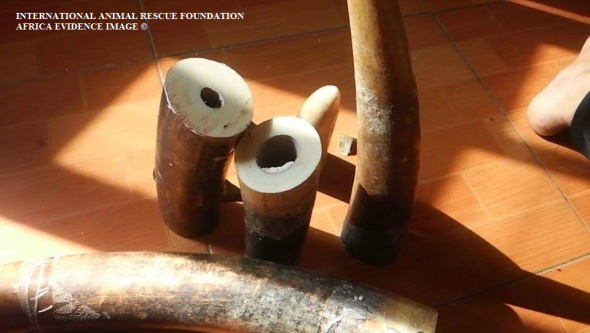
Female trader with male brags to investigative officer how ivory is easily obtainable from Benin via France.
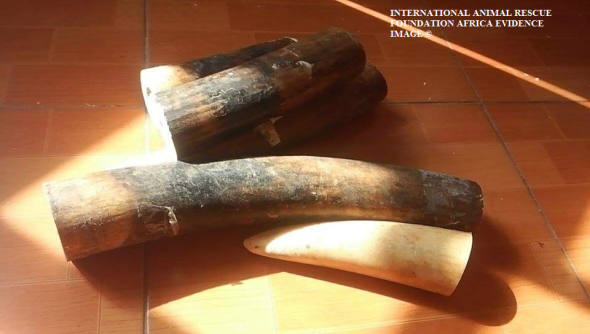
Trader informs investigate officer that ivory can be shipped into any county in the form of small firewood blocks.
The images above are just a small handful of evidence shots obtained from both the Vietnamese and Thai traders that had no worries whatsoever on displaying these items either to our investigative officers, or trading online via secure trading chatter rooms. These chatter room’s are mainly frequented by medicine men and women, and general traders of antique and non-permitted animal parts, all of which anyone can enter on Google using a simple VPN tool.
While ivory trade is not necessarily a big secret within Thailand, the sheer fact that younger people are able to obtain ivory and rhino horn in such mass quantities is extremely concerning. We also have reason to believe that some of the ivory is deriving from passages via Benin and possibly Cameroon on the continent of Africa. Our enquirers in relation to the African trail of ivory into Asia began with Mr Chan**** ***** who states he works for the Homme D’Affaire International which we believe is a made up organisation.
Chan**** *** runs a bush meat shop within Cameroon selling anything from pangolins to endangered turtles, masks and cars, and coincidentally his shop is also operational on Facebook. Had Mr Chan**** *** not bragged about ivory making its way from Benin into Vietnam we’d never have caught up again with our Asian fiends. Some of the images from Ch**** *** bush meat shop of horrors can be viewed below.
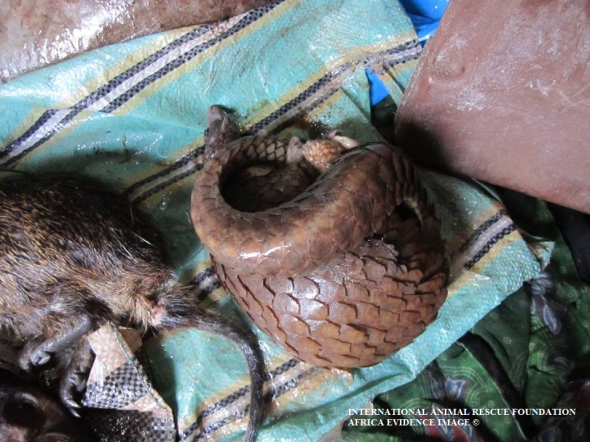
Investigators identified two species of pangolin. Both tie into the Asian and African wildlife traders.
E.A.D officers investigated the trade between the two African and Asiatic pangolins, above is that of an African pangolin which was the same species seen within the apartment of the Vietnamese citizen that offered our Singapore investigative officer rhino horn. So we’re 99% positive that all three Asian citizens have more than your normal ties to the African bush meat poacher whom we know is using a trade route from both Benin and Cameroon, onto Europe and into Asia. The African pangolin 1 of 3 identified in the apartment in Vietnam can be seen below.
African and Asian pangolins are fast becoming rare with the vast majority of Asiatic pangolins now nearing extinction. Pangolins are used within the Asian and African (TCM) Traditional Chinese Medicine trade. Furthermore the scales of the pangolins are used to make jewelry or coats. The meat of pangolins is considered a delicacy. Every year we loose more and more pangolins to poaching, and while the Asian pangolin continues to decrease in population size, the African pangolin will be placed more at risk furthermore.
Investigators were more shocked at the sheer fact that three young adults were able to obtain large quantities of illegal and legal wildlife products then freely trade them on the streets or upon their personal Facebook profile shop forums. The images below depicts large quantities of tiger teeth, bear paws, shark fin and what we believe to be tiger testicles.
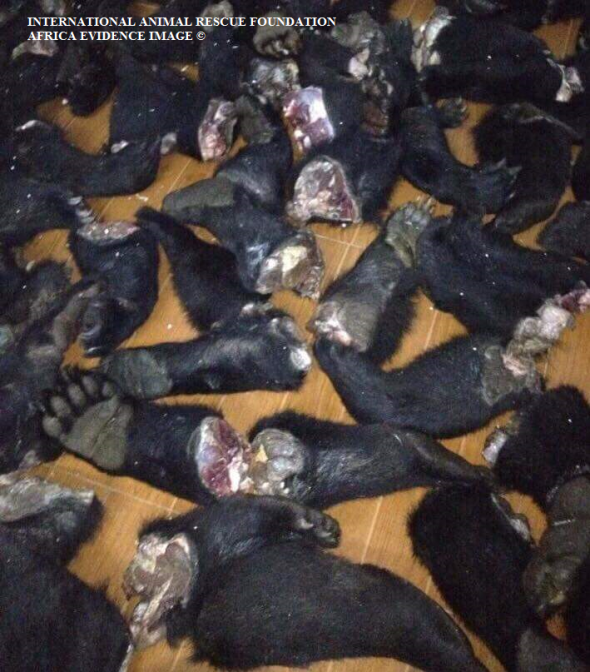
Thai and Vietnam traders offered investigators bear paw, that is used to create a fake medicine soup.
The following images below are from tigers that our International Animal Rescue Foundation Asian unit have successfully identified as Sumatran tigers listed as critically endangered on the IUCN - International Union for the Conservation of Nature’s Red List.
Please note you may find some of the images below disturbing and emotionally upsetting.
Investigative officers were told that tigers are bred within small enclosures within the family home. From there the young cubs are then killed with the adults soon after. There body parts are either stored in a freezer whole, or decapitated. On mentioning tiger skins the EAD officers were informed that some of the tigers are skinned of which their pelts can fetch anything in the region of $5,000 to $10,000 USD. Needless to say we were mortified and shocked at the traders openness and complete disregard to the fact tigers are nearing extinction within the wild.
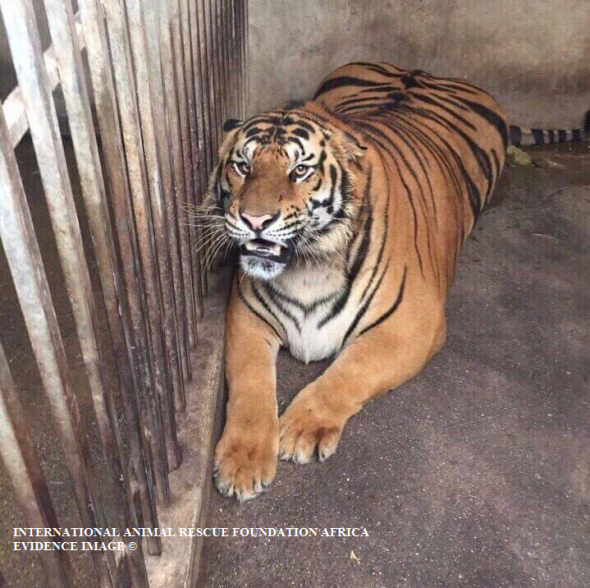
One of nine tigers that both the Thai and Vietnamese traders keep as pets. Sadly to later breed and kill for parts.
The tiger pictured above was being kept as a pet in a dark barred cage in Thailand, Bangkok. We personally believe that the three traders we’ve been monitoring since June 2015 have traded more than nine tigers (if not more). Based on the number of tiger teeth and claws we’ve estimated a probable 20-30 tigers have unfortunately met a rather gruesome and barbaric death, the sheer number of skulls, pelts, teeth, claws and tiger male testicles shows these traders are more than professional. The following images below may be upsetting to some viewers.
Despite the best attempts of law enforcement around the globe, CITES and national NGO’s pushing for stronger laws internationally and locally very little in demand and trade is being seen relating to tigers. A six month investigation of illicit wildlife trade has shown to us that trade is becoming more widespread, younger people are more involved rather than the elder generation. Regardless of education and awareness in schools the E.A.D are now picking up on average a total of 3-4 teenage dealers weekly. Many of them have ties to African bush meat traders too.
As previously explained Asiatic pangolins are nearing extinction, yet despite the amount of seizures being made, little in the way of a decrease in trade is being witnessed. Furthermore as Asian pangolin populations decreases, African pangolins will be poached to continue the trade and demand of pangolin meat, scales and medicine. None of which has any medicinal value whatsoever.
The images below were what prompted E.A.D investigative officers to then look further afield, taking the team from Thailand and Viet Nam to Africa.
From 2010 the External Affairs Department have noticed a staggering increase of tiger teeth and claws on sale via the Social Media platform identified as Facebook. There are two different types of trade. 1. Counterfeit trade which is primarily wooden carved tiger teeth and claws and 2. Real tiger teeth and claws. Like all of the evidence above and below obtained by the EAD’s Operation Trojan Horse officers, every part of the tiger is used for illegal trade.
Tiger teeth and claw necklaces are worn in Asia in the belief that such animal parts will bring the wearer power, good-luck, and ferocity. Many of the traders that we investigate often tell us that they have either found tiger teeth and claws on the ground in forests, purchased antique tiger teeth and claws from dealers. Or in this case have illegally harvested the tiger teeth and claws from home-captive bred tigers seen in the images below. The images below form part of the evidence files on the three individuals spanning from Thailand to Viet Nam.
(Please be warned the following images may be upsetting to some viewers).
Below are step by step guides that the Vietnamese trader bragged to E.A.D officers on how to harvest tiger teeth and claws. The images are upsetting and also include the skinning of tigers.
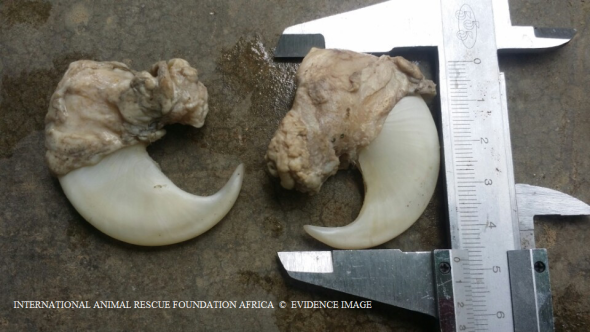
Tiger claws are measured like rhino horn and ivory. This process helps traders to price up and show legitimacy to buyers.
E.A.D officers are (as explained) unsure on the exact number of tigers that these individuals in question are breeding and trading within the home and other premises. From the evidence obtained the number of teeth and claws points to at least 20-30 tigers bred, killed and processed in Thailand and Viet Nam. An unidentified trader who’s name we cannot make public proudly shows on their Facebook page how easy it is to skin a tiger (images seen below).
Tiger testicles are also used within the Traditional Chinese Medicine trade, however this is the first time we ourselves have actually come across such tiger testicle trade (normally one views tiger penis on sale real and counterfeit). The trader[s] we’ve been investigating boasted within an online forum how tiger testicles are now more popular than tiger penis itself.
The image below shows the trader boasting how large the male tiger testicles are before he then sets about to remove, bag and weigh up the testicles for sale. Its believed the testicles ‘may’ be transported illegally into China or onto wealthy Viet Nam/Chinese restaurants where the soup of tiger testicles is ‘allegedly’ known as a delicacy and (aphrodisiac soup). None of which holds any medicinal evidence whatsoever.
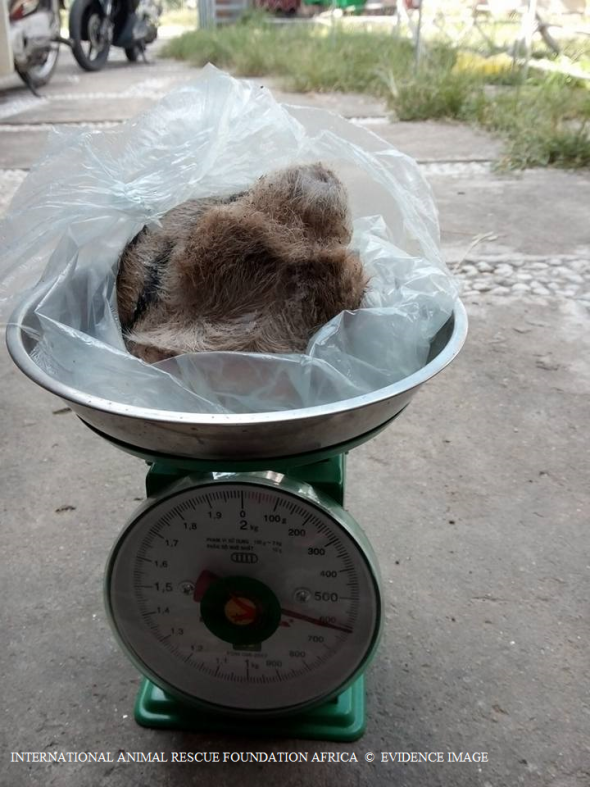
Tiger (testicles) weighed for sale. The testicles will most likely be used to produce tiger testicle soup.
Back in 2013 the Humane Society of the United States stated a total of twenty seven countries had outlawed the sale and trade of shark-fin for the production of shark-fin soup. One would then be led to believe that since this mass outlawing and bans on trade, it would therefore heavily restrict shark poaching and trade of shark-fin soup. In Thailand and Viet Nam it appears not to be the case (both countries have no bans in place).
Unfortunately when E.A.D officers investigated the traders herein this article, we uncovered more than enough shark-fin trade to prove that neither laws or outlawing of the trade is having any real effect on stopping or restricting the trade of shark-fin. On speaking to the unnamed trader within a forum online for TCM trade, the individual boasted how easy it was to obtain shark fin, an transport that into Asian and North American countries. The images below show shark-fins drying at the traders apartment in Thailand and Vietnam.
International Animal Rescue Foundation Africa and two investigation units aligned with us; External Affairs Unit and Operation Trojan Horse (Cyber Crimes Division) have been tracking countless illegal wildlife traders all over the world since IARFA established the (Cyber Crimes Unit). While the evidence above may shock many, its little compared to what we locate every month. Investigative officers work under immense pressure, stress and must work fast to ensure that traders once located are reported to the relevant agencies.
On the 23rd December 2015 Interpol’s Environmental Crime Unit and the Cyber Crimes Serious Investigation Team were alerted to our findings, while we can state now that our investigation which we have decided to make public has shown much data on trade. The investigation is considered normal due to the size. The most shocking aspect of this investigation was the fact that our younger generation are more active now within this illicit trade. That in itself poses some rather large problems and concerns, and one that now needs addressing at both government and educational level.
As of today 29th December 2015 this investigation has since been increased to “extremely urgent”, and the need to locate these men and women is critical before any further animals die, in Asia and Africa. All three individuals have shown a complete disregard to the fact rhino’s, elephants and tiger populations are losing ground throughout the Asian and African continent. Sharks and pangolins are also nearing extinction too. Trade and demand as explained has skyrocketed online to worrying levels, yet slowly vanishing on the ground.
Thailand is the new hub for rhino horn trade and Facebook and other social media platforms are being exploited to trade just about anything wildlife, regardless of such products being illegal. Trade and demand on the ground has also changed from elder to younger individuals (as explained) which is very worrying. One of the largest trading countries that we are seeing to date, is that of Thailand, which would explain why the BBC back in 2014 couldn’t locate much in the way of rhino horn (in Viet Nam).
Since General Prayut Chan-o-cha took over running of Thailand back in 2014 wildlife trade has skyrocketed. While we cannot prove increasing trade has anything to do with General Prayut Chan-o-cha, it just seems too coincidental that a sudden spike of rhino horn, ivory and other wildlife products has shot through the roof.
Facebook was where this investigation ended prompting us to then send all evidence to Interpol. Facebook hosts some 1.32 billion users worldwide, 32% of which use cell phones to login into the United States platform, thus making it difficult to locate traders and dealers.
International Animal Rescue Foundation Africa have been lobbying Facebook since the start of the year, to implement new terms and conditions to heavily disrupt this trade and demand. A petition that has amassed over five thousand signatures can be signed here and shared. However we’re not holding our breath. Should the Facebook platform and its CEO Mark Zukerburger not implement new polices on trade and demand of illicit wildlife products we will unfortunately soon see many species of animals pushed into extinction. Ivory and rhino horn trade has exploded to worrying new levels. Rhinos, elephants and tigers are being poached moreover, and the internet as well as ground trade is awash with anything from drugs, firearms, child trafficking (most of which links back to illegal wildlife trade).
One of the men that is pictured above is responsible for the trade of wildlife parts above, he has since been reported to Interpol along with his partner and other associates whom we have been investigating since June-December 2015. The individual above is believed to be in Hanoi (Nguyen), or Ho Chi Minh City, possibly with an accomplice. His name and other accomplices we cannot make public as yet. The image is recent.
A more closer image of the individual and the female is located below. We believe based on evidence obtained that the male is using the females account on Facebook too.
May this be a stark warning to all wildlife traders out-there. International Animal Rescue Foundation, External Affairs and Operation Trojan Horse will eventually catch up with you. If we catch you trading in wildlife products we will monitor you on the ground and online. From there we will press for your arrest and detention.
Within the past year Interpol has been escalating their new project identified as OPERATION WORTHY II Operation Worthy is targeting many individuals involved in international and local serious crime.
Updates on this case will follow as and when we’re updated. Thank you for reading.
Chief Environmental Officer (CEO)
Director
info@international-animalrescue-foundation.org.uk
If you would like to make a small donation to our organisations investigations department please click the link >here< Your donation funds 10% of our environmental projects, while we ‘self fund’ the remainder 90%. Please contact us via the email above for further information. You are not at liberty to donate, nor do we beg.
“REPORT WILDLIFE CRIME TODAY”
Environmentalism Chapter 26 - Understanding Poaching
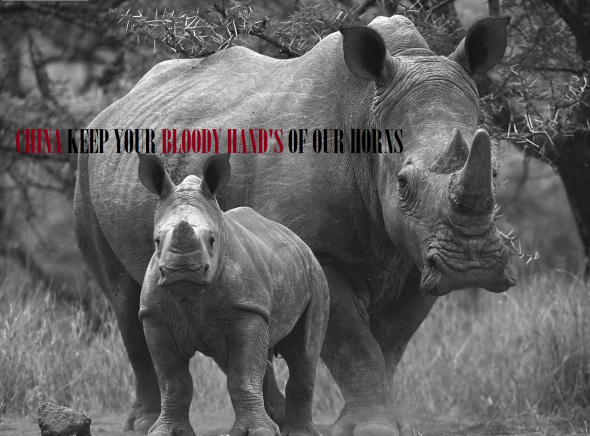
In this last document on understanding poaching part 5 I’m going to explain the other side the increasing demand for Rhinoceros and Elephant poaching and why demand is colossally raging out of control when in reality from recent surveys it has been proven that Rhinoceros horn and ivory to other animal parts are not actually being used to such a high degree anymore for medicine but rather consumption and religion/cultural beliefs or gaining what our once ancestors had within Asia.
Since January 2011 we have been monitoring other arrests that are related to Rhinoceros horn and ivory to try and ascertain other areas that we may have overlooked. These areas that we covered where in the regions of Hanoi and Saigon, and most districts of China, the two regions of Vietnam that I have identified is where most Rhinoceros horn is actually sold, however within China it’s sold all over as a whole.
The results were somewhat worrying that showed the levels of Rhinoceros horn in Vietnam are in fact very low, which confused us, based on the usage levels from 2012 surveys and how easy it is to actually obtain via classified advertisements, private marketers, to street vendors and the medicine markets.
Coming as no surprise the majority of Rhinoceros horn is actually fake, meaning that we have now [petty criminals] deep within Asia as well as highly sophisticated criminals working within Vietnam that is seen on whole as the largest user and consumer of Rhinoceros horn and second largest trader in Elephant ivory and other animals parts.
Records and arrest documentation within Asia have shown that 80% of Rhinoceros horn is non-Rhinoceros horn but chemicals that are made up of many different minerals, stones and Papier-mâché - French for “chewed paper”. The fake Rhinoceros horns were so delicately and intricately produced and then polished that buyers of Rhinoceros horn couldn’t even tell the difference between the real thing thus handing over thousands of Vietnamese dollars just for the [petty criminals] to then vanish leaving the [lucrative black market] trader some thousands of dollars out of pocket.
Rhino horn smugglers are now making very high quality fake horns, allowing unscrupulous hunters to sell the real horns at a huge mark-up to black market dealers for traditional medicine/and/consumption to status symbols. The fake horns are made with top quality resins and look so authentic that they are almost impossible to distinguish from the real thing, a report presented this week to members of the Convention on International Trade in Endangered Species quoted CITES officials have been alerted to the increasing involvement of professional hunters in the illegal rhino horn trade, this is yet another reason why international Animal Rescue Foundation © is working towards a full moratorium on hunting due to vast corruption and fake horn sales.
Trophies are exported to hunters after a legal hunt, but once the hunters have received the trophies in their home countries, the original rhino horns are removed from the trophies and replaced with fake horns. Our investigations teams have within the last four weeks located many traders that are selling trophies “on mounts” and off mounts of which it was clearly visible that the real horns had been removed, to even one trophy quoted as “recently hunted” [Northern White Rhinoceros] even though it had been pushed to extinction within the last decade, the so called antique’s horn was even placed pointing downwards and what looked like [glue] around the base of the horn [indicating that the real horn had been removed and a fake resin horn had been placed on the trophy.
CITES did not specify in which country the fake horns were being made and sold, but details in the report point to the possible involvement of either American or European hunters in the fake horn scam. As we ourselves quoted this “didn’t come as a surprise” as we know how many illegal yet fake narcotic sales are on the market, and with narcotics making gargantuan sums of money then the temptation to cash in on the (counterfeit trade) from petty yet skilled criminals is there and has been for some years.
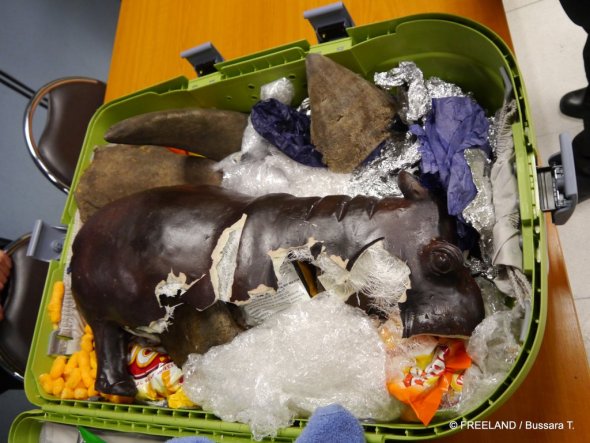
Horns are smuggled in via hiding them in statues to avoid detection.
In 2012 wildlife investigators in the US arrested several American and Vietnamese nationals in a major bust in several cities across the US following the seizure of numerous rhino horns, some of which were suspected to have originated from legal rhino hunts in SA and other parts of the continent being mainly Zimbabwe that has only 700 Rhinoceros left within the country alone.
There have also been a series of robberies from museums and private collections across Europe over the past three years in which the horns were stolen from mounted rhinoceros head trophies. The fake horns were initially made with a mould and were relatively easy to identify, but recent reports from authorities indicate that fake horns encountered lately are made in high-quality resin with a density even higher than that of a real horn.
This makes visual identification, once fully mounted, extremely difficult. But CITES officials have now found a way to smoke out the culprits (so they believe). Fake horns can however, be identified relatively easily by collecting and burning a small quantity of dust from the horn, which will deliver a distinctive smell indicating that it is not rhinoceros horn. Even though CITES have stated this, the unscrupulous buyer that is purchasing on the back street’s doesn’t always have the time to examine the horns leaving them out of pocket by thousands of Vietnamese dollars.
In the light of this new trend, it is of extreme importance that CITES parties should have adequate legislation and enforcement controls in place, to prevent horns that are part of legal exported trophies from being used for purposes other than hunting trophies, and to ensure that the trophies remain in possession of their owners.
Another possible source of the fake horns is Vietnam, which has been implicated as the end destination of dozens of SA rhinos that were shot legally by Vietnamese poachers posing as professional hunters. However the Department of Environmental Affairs in [2012] has now ceased this and Vietnamese hunters can no longer hunt or obtain a hunting permit for South Africa.
The report notes that Vietnamese authorities had pledged to conduct a stock-taking exercise to check whether SA rhino trophy horns were still in the possession of Vietnamese hunters. It is vital for the authorities in Vietnam to conclude this activity as a matter of urgency and to investigate fully all incidents where trophies are no longer in possession of the hunters. Such follow-up investigations can provide important information on the identity of the driving force behind the trafficking of rhino horn. People who no longer had their horn trophies should be able to tell investigators who the horns had be sold to. This has yet to be acted upon and we are led to believe that it will never be taken seriously too.
With all this evidence and knowledge though in the public domain and now known to the environmental law enforcement agencies the counterfeit trade is still on-going which in theory is driving the demand for obtaining the real horn up at increasing and alarming rates thus now threating the South African and African Rhinoceros species on a whole even more.
Saving Rhino’s the online non-profit organisation quoted;
The demand for rhino horn is so great in Vietnam that certain outlets are said to be selling imitation rhino horn made from cows or buffalo.
On the Vietnamese market, some sources report that a “freshly cut” rhino horn commands a retail price of USD $25,000 - $40,000 per kg. Imitation horns supposedly fetch a substantial price of USD $15,000 per kg.
Contrary to popular belief, the manufacture and sale of “fake” rhinoceros horns does not flood the market and drive prices down. Instead, imitation horns keep the trade invigorated and the demand high.
Regrettably as http://www.savingrhinos.org/vietnamese_rhino_horn_trade.html quoted and ourselves and CITES that until the demand is hit in every possible direction including the fake/imitation trade then we are going to view more Rhinoceros murdered for fake horn. It should also be noted that the Rhinoceros horn trade should never be lifted until all these avenues have been researched into more, investigated then illuminated and closed down that could cease the demand colossally.
Fact stands though that 80% of Rhinoceros horn is indeed imitation horn or other animal horns of which again we have been monitoring very large hunting organisations and outfitters that are hunting for demand vast populations of horned African species from the Oryx, Antelope, Impala, Kudu and Springbok of which the skilled petty criminals in Asia, America or Europe then delicately craft these horns with other materials in to a fake Rhinoceros horn. Such sales of horned animal products are on sale everywhere. http://www.africancraftsmarket.com/carved-horns.html
The problems don’t just stop at Rhinoceros horn nether the demand for fake ivory from which the “processed ivory can sell in the region of $25,000 to $100,000” depending on design is also on the rise and at worrying levels.
Other animal tusks such as Hippo ivory or Walrus and even bones are all being traded off too as Elephant ivory which again is increasing demand thus keeping the barbaric and senseless poaching continuing on such a large scale that saw in 2011 some 25,000 Elephants slaughtered for greed and culture, 2013 has seen almost 200 Elephants slaughtered for their tooth’s [tusks] for the entire continent of Africa.
Examples of synthetic Elephant ivory can be seen when the bottom of the tusk appears to be sliced, but no grains or ivory identifications are clearly visible. The “cut” area of the imitation tusk is created when the item is removed from the mould. There will also be small holes from bubbles made in the moulding process similar to that of plaster or plastics.
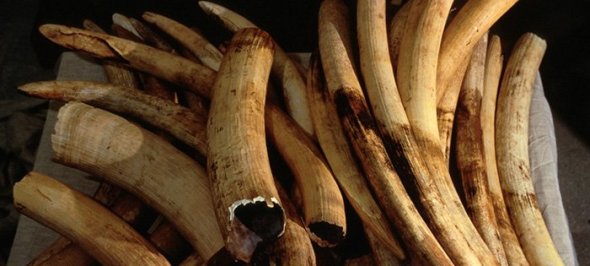
Wildlife internet crime is on the rise if we know your selling on the internet you will be located, and your details logged and you will face a hefty prison sentence or fine - this trader in India caught our eye last week one of many.
Sadly though there are many skilled craftsmen within Asia that have worked in the legal and illegal ivory trade for some years before ivory trade was eventually banned in the 1990’s. To become a skilled carver too you have to pass a five year course which coincidentally is run and funded by the Chinese government. These craftsmen are so highly trained that sourcing the real Elephant ivory from the counterfeit is near impossible unless a DNA sample is carried out.
Substitutes supposedly do not have the integrity of true ivory, and part of this has to do the growth pattern of ivory, called Schreger lines, which facilitates carving at any angle. So it seems the uniqueness of the material as a carving substrate, its beauty and its historic significance in terms of a rarity and prestige all contribute to the demand.
Even flooding the market with fake ivory would not help to reduce pressure on living elephants. The prestige and appearance of the real article make consumers demand genuine ivory in exactly the same way as Rhinoceros horn trade.
Many buyers of fake ivory and Rhinoceros horn will perform checks on the articles such as burning small sections to identify if the ivory is counterfeit however this is not always the case when the purchaser is presented with a $50,000 piece of crafted ivory or Rhinoceros horn at $75,000kg.
Would you as an illegal peddler allow someone to take a lighter or blow torch to the product and then [possibly damage the product] ruining months if not years of crafted ivory to damaging a Rhinoceros horn that [could indeed be real] you could be landed a hefty [illegal bill or even shot dead].
So how do we tackle the problem and what other areas can be looked into to tackle increasing sales to decrease demand?
- Firstly we could ask CITES and governing environmental agencies to now work towards implementing a full ban on all Asian hunting permits being obtained thus decreasing ivory trophies then being sold on the black market. Fact stands that in China some 90% of all ivory is illegal and has no papers as quoted by two independent investigative environmental agencies and the National Geographic Channel. Only 10% of the ivory in China is legal. [That’s incredibly shocking and worrying]
- Secondly we could ask CITES and governing environmental agencies to work on implementing a full ban on all Rhinoceros and Elephant hunting to reduce the market even more. This would also decrease the potential for any mounted trophies traveling into Vietnam illegally from other nations thus reducing demand on a whole.
- Online sales need to be tackled and by doing this I.S.P [Internet Service Providers] need to enforce now tougher regulations such as banning Internet Protocols from their sites thus cutting the trader and/or criminal of from the internet. Environmental agencies must share this information with other ISP providers so if the criminal/trader then located another ISP they would be immediately banned as the IP address being that “your personal computers number” would not be able to locate the internet based on shared intelligence. The same ruling must more or less apply to all E-mail providing companies of which should they notice the same IP logging on based on shared intelligence then the email provider does not provide thus communicating with wildlife and law enforcement agencies of which the individual can be monitored by all means of online trading.
- When traders are located selling and buying on the internet law enforcement agencies must introduce tougher penalties to now ban the trader from using any form of internet communication device, computer, laptop, internet café, mobile phone, proxy servers. A confiscation order must also be introduced of all communication equipment of which is then subsequently crushed if illegal online activity is noticed.
- Online classifieds must now be given a three count rule then banned we have located now many American, African, Canadian, European, and Asian buy and sell sites that are still not checking the sites accordingly for illegal wildlife trade. By enforcing such measures of which should they flout three times then the sites are automatically shut down or censored.
Since Operation Trojan Horse began [2011] part of the International Animal Rescue Foundation’s © environmental counter intelligence ground and monitoring research team exactly 175 Asian, American and European sites have been noted with 69 off them sites communicated with thus informing them of the environmental laws both on line and on the ground.
34 of them sites where shut down from the 175 located and eavesdropped on with the remaining still under investigation of which we are communicating with law enforcement agencies exactly what they are providing, advertising, to the whom the buyers are and what other web of communications the buyer[s] have such as the black market, couriers, poachers, social media and other.
These options must be seen as the only option in reducing demand further before implementing a legal trade in Rhinoceros horn or ivory, and as an environmental investigations and animal welfare unit that’s provided factual evidence, surveyed evidence and statistics to, high crime rate, low unemployment, and high poaching then demanding a full moratorium we cannot yet agree on fully as experienced and knowledgeable environmentalists until every possible avenue has been effected. The reasons for not “as yet” fighting for a full moratorium I have highlighted below. Please take in to account that we state “full and not partial” for the reasons highlighted below;
- Would the consequences of a complete ban on hunting then impact on job losses and liquidation of companies thus increasing anti-social behaviour, crime, increased poaching, and poverty, suicide, to effecting child and adult education?
- The demographics of South Africa encompass about 50 million people of diverse origins, cultures, languages, and religions, this is based on the last census of [2011] with the next census not due until the years between 2016-2021. Every minute within South African alone there are 10 children born every minute thus increasing populations which has a detrimental effect on natural habitat pushing more species out of their natural living areas. By implementing a complete moratorium would this then have a knock on effect on species that are so tightly packed within areas they have been pushed into via habitual destruction that agriculture and homeland would be consequently invaded to even placing human life at risk and destroying crop?
- By placing a moratorium on hunting for the species of Rhinoceros and Elephant in South Africa would this increase poaching of other species thus introducing another trend to the black market thus starting a new destructive circle of?
- Would a full hunting ban increase what we are seeing now botanical poaching thus reducing near threatened endangered and criticality endangered species of plant and trees that human and animal life depends on?
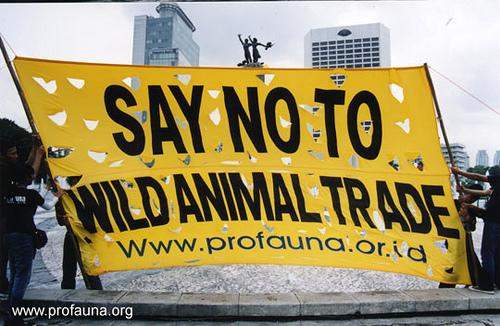
As professional conservationists we cannot take any chances or risks of placing a nation in even more poverty, damaging conservation and agriculture more too increasing crime and possibly a
newer poaching trend. Surveys have to be undertaken, risk analysis, environmental monitoring, and what other methods can be introduced to decrease the illegal black market of wildlife trade.
The department of Environmental Affairs issued a ban on all hunting permits to Vietnamese individuals applying for a hunting permit in 2012 of which the D.E.A quoted in their last government public announcement 1st March 2013 that hunting permits that have been applied for in 2012 had decreased significantly by almost 50%.
This may sound fair and good news, however this ban was aimed more at banning pseudo hunting from one nation based on the number of corrupt individuals that haven’t even fired a rifle never mind hunting in [Vietnam] from entering in to South Africa.
Most of the non-genuine hunters were not keeping the trophies as stated in environmental law then removing horns as explained above thus subsequently selling the real horn on. The trophy they had in their possession had then either coincidentally vanished or the horns had been replaced by imitation horns made from fine resins and/or resin and papier-mâché.
However the poaching has still erratically increased and banning [just] Vietnamese individuals has not had any effect at all from the ever increasing demand of illegal wildlife trade that’s flooding both Thailand and Vietnam at alarmingly high levels. http://www.capitalfm.co.ke/news/2012/05/mozambique-customs-arrest-vietnamese-rhino-horn-smuggler/ http://english.vietnamnet.vn/fms/society/56937/the-biggest-ivory-rhino-horn-smuggling-cases-in-vietnam.html http://www.rhinoconservation.org/2013/01/07/rhino-horn-smugglers-arrested-in-thailand-and-vietnam/
We was not expecting the D.E.A (Department of Environmental Affairs) to just ban Vietnamese citizens as what’s to stop a Vietnamese posing as a Chinese or Japanese citizen with fake papers, also what’s stopping them from obtaining fake passports and papers that can and are made to order and online or via black market tourism trade that helps illegal asylum seekers to enter nations using political persecution as a weapon for refugee to then carry commit crime and terrorism.
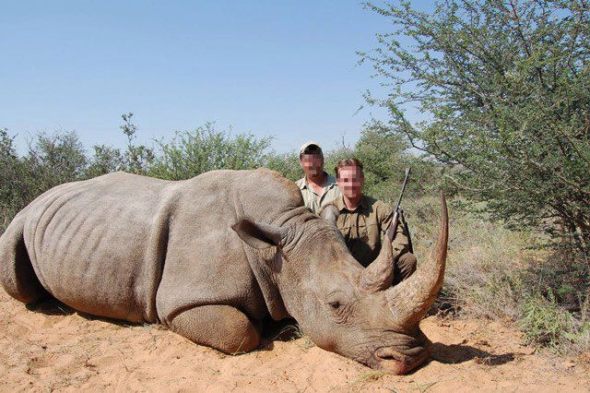
Since the DEA banned hunting Vietnam citizens from applying for hunting permits there has been a substantial increase in the amount of American, Russian and Eastern European hunters now applying which is believed to be the increase of more Rhinoceros pseudo hunting to supply the demand for Rhinoceros horn in Asia.
Since the permit ban was placed evidence suggests that nationals from the Czech Republic and Poland have been implicated in pseudo-hunts. Information from the DEA in South Africa indicates that there has been a 50% plus reduction in the number of rhino trophy hunting permits granted and that the number of hunting applications from Vietnam and other East Asian countries has dropped off as explained above. However, there has been a reported rise in applications from Russian and, particularly, US hunters (up by 300% in 2012 so far compared to 2010) possibly indicating the flexibility and opportunistic nature of pseudo-hunting criminal operatives.
From 2003 to 2013 those that have been arrested for Rhinoceros poaching alone have been more Afrikaans indicating that syndicates could possibly be working within the refugee camps in Africa posing as refugees then sending the poor man into South Africa from Mozambique.
The total number of Mozambique’s that have been arrested is now standing at 479 from 2003 -2012 of which they are the most known poachers, and with the evidence above within the links it clearly shows that Vietnamese are working inside Mozambique which now needs addressing immediately. The poacher then supplies the Vietnamese or Thai couriers which consequently keep the demand flowing, although it’s been disrupted slightly.
From research we have amassed the following;
- The ban on Vietnamese hunting permits has been a complete waste of time with more poaching increasing via African individuals via Mozambique thus supplying the market more. This could also suggest that should there be a lift of the Rhinoceros horn trade with [controlled prices and trade] then reflection from the hunting permit ban on Vietnamese could increase poaching could as a whole considerably more.
- Pseudo hunting from US, Russian, Polish, and Czech Republic individuals has increased which if not monitored or some form of control implemented could see the Rhinoceros population’s desolated.
- 80% of imitation horn is deriving from Europe and America of which is then flooded into Vietnam of which when the buyers and users become aware of the horn being fake this then increases demand more via poaching. Keeping the imitation horn demand flowing too is also increasing the real horn demand both with ivory and Rhinoceros horn.
- Antique dealers are now cashing in on the horn and again supplying this to the market.
- Internet trade has to be tackled more where more horn in larger sums is being peddled on classifieds, buy and sell, to private sites using code words, acronym’s and other.
- There must be international environmental police established in each of the 178 nations that are listed with The Convention on International Trade in Endangered Species of Wild Fauna and Flora.
- Peddlers in the imitation horn trade need to be sought and consequently arrested, the chemicals they are using sought and then listed in the same way as agricultural fertilisers and other materials so that should a producer order these chemicals in large quantities law enforcement are then informed which in turn can track those responsible.
- The sales of other trophy horned animals has increased since the ban on Vietnamese hunting permits was introduced.
- Refugee camps and customs need to be looked in, monitored, and investigated.
The sales of imitation and fake Rhinoceros horn’s needs to be taken seriously as whilst this is still in the woodwork it’s creating more demand of which needs nipping in the bud hard with the traders dealt with in the exact same manners as those peddling in the real horn and wildlife trade.
- In October City Press reported on a man near Musina, Limpopo, who carved fake rhino horns and boasted that he could sell them for between R15 000 and R25 000 each.
- March the 2nd 2012 in Johannesburg another seizure of fake horn was seized that appeared to be have blood on it the accident on the N3 near Johannesburg saw two men arrested then subsequently let off.
- A lot of dealers know they are dealing with fake horn products and as such consider themselves to be ‘legal’. [It’s actually illegal under CITES law to be selling fake or real horn in Vietnam however it is in operation on a high level].
- Legal sales of fake horns and skulls are being purchased in the United States, Europe, and Asia that now needs monitoring and action placed.
Just to give you an insight as how nervous people are with regards the trade in Rhinoceros horn in Vietnam being fake, we searched other dealers and located information from dealers below which is a “guide to check if the horn is real or fake” which again points to the theory that 80% of Rhinoceros horn is indeed imitation and driving demand more. The site checked also gives a bigger insight on the horn trade in Asia as a whole which is worrying”
The dealer quotes;
“A wide range of verification methods are offered when questioning the authenticity of horn material. From the density of the material when cutting with an iron saw, to the colour of the ‘milky’ solution when powder is mixed with water or rice wine, shining a sharp torch through part of the horn, burning a corner and sucking in a hairy smell, tapping the horn piece with a finger nail and analysing the sound, pulling off some individual fibres (it seems one of the most reliable ways to try to identify real horn”.
The dealer then goes on to quote;
“Most of the horn on offer tends to be cut slabs or the tips indicating that it mostly comes from polished and modified water buffalo horns”.
“When asked for the easier to identify base of the horn the dealers tell the stories of it being the most valuable part and always sold first and them only having the tips left”.
“Prices quoted at the wholesale level to buy a whole or a large chunk of a horn, based on weight, were pretty uniform at U$ 20 000 for African horn and U$ 40 000 for Asian horn per kg (they being much smaller than the African horns). It was clear that with imitation products more flexibility existed in negotiations (in one case a piece of horn was cut from the bigger part with a chisel and hammer and pieces flying all over shop”.
“TCM dealers do trade in small quantities and it then it becomes retail and the prices go up (we also bought a sample in commercial packaging in Chinatown in Jakarta which officially stated it being 0.3 grams contained in a small glass vile”.
“Besides this retail trade for medicine there is the market of the big players buying whole horns and having special trusted dealers doing the verification for them. These players include the nouveau rich with a Rolls Royce in the car park who buy it as a must have item, as a status symbol and possibly also looking at it as an investment opportunity with supply bound to get more restricted and respective prices going up. On several occasions we were told of a family patriarch buying up a whole horn and then taking care of the family’s need and handing out pieces and powder as needed”.
The dealer then quotes the most worrying evidence;
“A dealer in the north of North Vietnam told us that a drug enforcement unit recently visited him and took some of his horn telling him that he would be paid later, indicating corruption in law enforcement on all levels”.
“The grinding plates have now also gone “up market”, with a new version made out of special Japanese clay which was introduced recently. The pamphlet which comes with the very fancy packaging also includes images of a live rhino and promises that horn can ‘cure incurable diseases”.
“The latest step being the sale of a special contraption supposedly with Japanese motor that can be bought to grind down the horn into powder. The above plate is mounted on a rotating platform and the horn piece is then fixed above the plate into a vice type metal grip and lowered to the rough plate surface and then the machine is turned on, the horn base is stationary on the rough surface and the plate turns. So a whole industry producing accessory items is now evolving”.
“In the case of the Asian rhino horns on offer, the fakes are much more realistic since the base is generally part of the very small horns but there are also obvious fakes”.
WORRYING TRENDS AND RELATIONS TO THE UNITED STATES;
The main import dealers are well established businessmen involved in all kinds of related activities including the trading in other contraband (in one case said reputed to be amphetamines). In the case of a key Laotian importer he hands out a business card showing that he is the head of the chamber of commerce for his district and the deputy head of the Laotian boxing and swimming association. He also operates a macaque breeding farm with primates being sold as captive bred when many are indeed wild caught imports from Thailand and Cambodia - with most of them being exported to the US for medical research. He is also about to expand his tiger farm.
“Dealers on this level often hire ‘mules’, just like with the drug trade, to get the merchandize to their headquarters. If anything should go wrong at the international level they can disassociate themselves from any such transaction and they deal with the product once it is in the country and then they do not have to worry about any potential problems occurring along the borders”.
The dealer then quoted the most worrying news that was very shocking;
“However even on the international level there seems little to worry about. I recently bought an imitation horn from a US store which produces Bone Clones of all kinds of skulls, human and animal bones including museum quality skeletons. I transported the well done imitation product openly in my check in bag over half a dozen international borders expecting somebody to detect the shape and form on an X-ray machine and questioning me. It never happened”.
We must not under any circumstances lift the Rhinoceros horn trade until all of these most crucial avenues are explored and vaporised. Should the trade be lifted and even more Rhinoceros are murdered because of the trade both on the internet and via imitation horn to selling imitation horns and skulls worldwide then we could lose the Rhinoceros species more quicker than imagined with the Elephant unfortunately following soon after.
Should one not “understand poaching” and the “increasing demand” to “wiping demand of the plate” then regrettably we will lose this war thus placing other species in danger that will in turn keep the momentum of the destructive wildlife medicine and consumption trade flowing.
Dr J C Dimetri
V.M.D, B.E.S, Ma, PhD, MEnvSc
Director and Founder
Join us at Team Africa International Animal Rescue Foundation
www.international-animalrescue-foundation.org.uk
Founded 2010-2011
For more information on how you can help please email us at
info@international-animalrescue-foundation.org.uk
To report illegal wildlife crime, poaching, trafficking, large domestic animal abuse please email below or INTERPOL
externalaffairs@international-animalrescue-foundation.org.uk
The video below just shows the amount of disrespect that Thailand has even when the meeting for the CoP summit is under way. Whilst the meeting was being held this undercover investigation was filmed showing the illegal trade in ivory. Allowing the Rhinoceros horn trade to be made legal will have disastrous consequences, and be shown similar to this. Rhinoceros horn is not medicine.
The Egyptian lather below clearly has no worries about selling ivory, we also located more ivory tusks on his website owned by an American domain WEEBLY
This site can be located here http://elwahe.weebly.com/index.html
VIETNAM PLEASE WATCH THE VIDEO - RHINOCEROS HORN IS NOT MEDICINE
This site is monitored and enforced by anti spamming technology, by spamming your comments are automatically listed and then deleted without being shown on the site. This organisation doesn’t tolerate spam or spam bots. Please read the above before wasting your time.
Thank you

